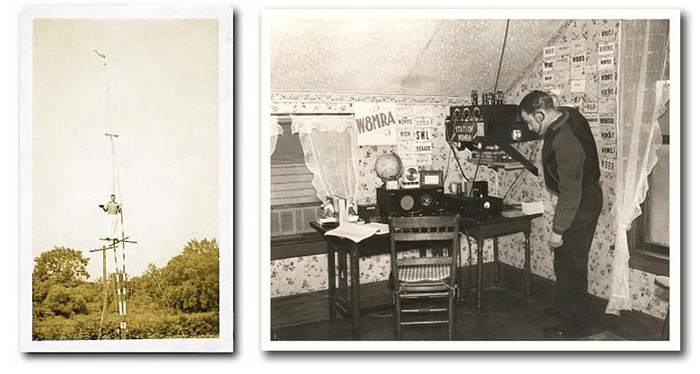MSgt. Phil Ingraham’s War Stories (Part 2)
Basic and Advanced Training
Phil stayed at the Fort Niagara reception centre about two weeks, after which he was transferred to Jefferson Barracks, Missouri for basic training:
From Fort Niagara, we went by train— a complete troop train, with nothing else on it — to Jefferson Barracks, Missouri, down near Saint Louis. If you’re amongst any number of people who might have been in the Air Corps, back during World War Two, a lot of them can tell you what Jefferson Barracks was. A lot of them went to Biloxi, and I guess that wasn’t much better, if as good….
Phil doesn’t provide details about his basic training in his recorded memoir, but it’s reasonable to assume that it was no different than any other soldier’s experience — several weeks of indoctrination into the army culture and shedding the individuality of civilian life, and along the way picking up the knowledge that all soldiers must learn to stay alive while killing the enemy. Once Phil had “learned his right foot from his left,” and had been taught the elements of being a soldier, he was sent to a classification centre. Phil continues his narrative:
We went by train to Salt Lake City and when you got there you were not “in grade” at all. You’d just left Jefferson Barracks as a flatfooted rookie, and you were ready now to see what you could do…. Every morning you’d look at the bulletin board to see if there was anything there pertaining to going to a school….
Phil’s ham-radio experience pays off
I had learned high-speed International Morse Code as a hobby and could do around 40 or 45 words of per minute with a semi-automatic key, and I’m not saying this to boast, but you don’t go down to the town tavern and pick up somebody that can do that every day….
I checked the bulletin board one day and it said that they were taking physicals to go down south to a training school for radio operators/gunners. I thought, ‘Hey, radio operator, that might fit in….’

By golly, I got the physical, and I got down to the point where I was supposed to line up the sticks with the two strings, you know, you pull them to line up the sticks so they are the same distance from you, and you know, that to save my life — this was the first information that I had a problem in my right eye — I could not line those sticks up, no way.
It was just as well that Phil failed his depth-perception test, for his failure probably did “save his life.” He explains in his recording that five other soldiers took the same test with him — and passed. But they were all killed when the plane taking them to gunnery school crashed into a mountain.
For Phil, his failure meant that he would cool his heels a bit longer at Salt Lake City, waiting for an assignment. It took a week, and a serendipitous meeting with an officer who knew Morse Code, a common language of radio operators at that time. Phil had been a ham operator for several years when he joined the army:
The following Sunday after that particular episode I took a walk — it wasn’t a bad day — down to one of the company streets and I heard Morse Code sounds coming out of a building, out of a door that was half open. So I walked over and I had to peek my head inside and there was a lieutenant sitting there, and two operators in position.
He said, ‘What can I do for you, soldier?’
And I said, ‘What’s this outfit here?’
And he said, ‘AACS — Army Airwaves Communication System.’
I said, ‘I heard your code — that’s what interested me.’
He said, ‘That a fact? You say you heard the code. You read the code?’
I said, ‘Oh yeah, I’ve been a ham for, I don’t know, about 12 years.’
‘What’s your code speed?’
And I told him.
‘Let me make a phone call. You interested in taking a gamble?’
I said, ‘I’m interested in almost anything, right now….’
I gave him my name of course, and my serial number, and so on, which was all that was necessary….
‘Write that down on a piece of paper, I want to make some more phone calls,’ and he did, and he says, ‘If you’re interested, you’re in the AACS,’ and I say, ‘Well I’m interested, believe you me!’ And he says, ‘Well, you’re in. Go up to the jeep out there that sits out front. There’s a fellow sittin’ out there. Tell him you want to go up to the barracks where you were and pick up the stuff you have there.’
So, all of a sudden I was in the AACS, assigned to work at the kind of thing I really liked. So it wasn’t a bad day.